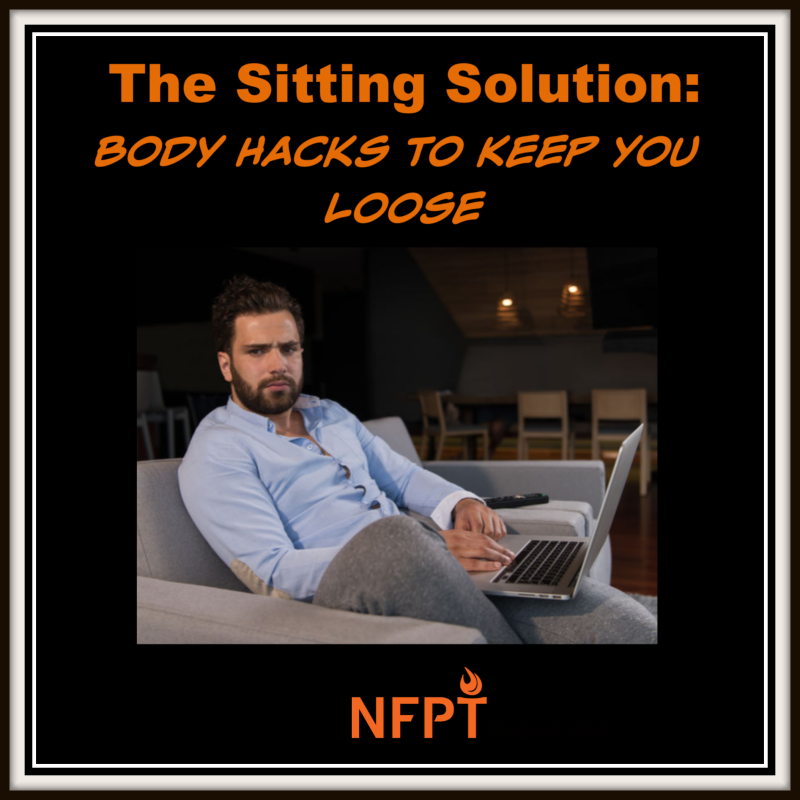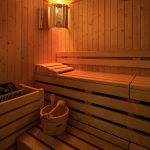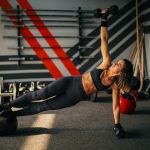
It’s a quarantine conundrum…as the body adapts to staying at home, how do we avoid the deleterious effects of our home behaviors? We all know sitting can be rough on a body, so here’s a little run down on the basics of why that is, and how we can curtail the seemingly unavoidable soreness and stiffness lurking around the corner.
Passive seated positioning for many creates a typical pattern of dysfunction in the body. Sometimes it can be as crazy as a coccyx (tailbone) sprain or sciatica, but more often than not, our bodies flounder around in the cesspool of “Lower Crossed Syndrome.”
Most CPTs would be familiar with this term, but for those not yet introduced, here’s a rundown.
Lower Crossed Syndrome
This refers to an “X”, or Cross, assigned to the side of our body as we sit. Anatomically, the X connects 4 quadrants…our glutes with our abdominal musculature, and our hip flexors with our low back musculature. The main principle is that long-duration seated positioning will be adapted to by our wonderful bodies, which makes a slight length/tension/function imbalance when taking on any other position. From that seated position, you can see your knees are closer to your chest causing the hip flexors to be in a statically shortened position…opposite of the glutes which are in a lengthened static position.
Same with the low back – short and tight versus the abdominals which are neurologically dampened by not having to support the structure nearly at all due to the back of the chair creating essentially a stability orthotic. When our fascia and neurological tone adapts to this position, what happens when we stand?
You can imagine a tight hip flexor bilaterally causing the pelvis to dump forward, leading to further hyperlordosis (increased curve in the low back) and increased low back tension. Meanwhile, our lower posterior chain (glutes, hamstrings, calves) have no idea what to do, and our core just goes sloppy. All of this just because our body is a wonderful adaptive machine, trying to make the best of our habits, be they work or relaxation.
(*Note that this is a simplification of what tends to happen but by no means the guaranteed dysfunction for everyone. Lumbo pelvic hip dysfunction takes into account different patterns of muscle imbalance than the aforementioned “lower crossed syndrome”. When in doubt, assess, assess, assess!)
Down the line, as a sports chiropractor, I typically see issues grow from this…facet syndrome (jamming back joints), pelvic torsion (our body begins to compensate and twist at the SI joints), frequent hamstring pulls, knee issues, chronic QL strains (where nearly everyone points to when I ask where their back pain is), and of course mid-upper back pain. So how do we slow it? Stop it? REVERSE IT??
Enter Dr. Patrick’s “Super Magical 4-step Solution to Sitting”
Generally speaking, a relatively healthy population will experience this previously described predictable pattern to some degree, so the following exercises should serve to re-balance the body, in the same way that if you overwork your chest you’d better dedicate some time to back muscles!
1. Hamstring PNF Stretching (30 seconds)
A pinch of autogenic inhibition, a dash of end-range strengthening, and a light dusting of myofascial release all packaged into one move.
– Get into a hamstring stretch position by hinging at the hip with a flat back
– Hold position while engaging the posterior chain…press the heels into the ground as if someone was trying to pull a rug from under them
– Slowly relax, shake it out!
– 10 second holds, 3x each
Errors: If you feel pain, stop and pick your sports doc’s brain about it. This should just feel like a good stretch.
2. Quad PNF Stretching (1 min)
– Get into a quad stretch, holding one able with same side hand, keeping shoulders, hips, and knees in strict alignment (plumbline)
– Get heel as close as you can to your bum, hold it there firing your quad and pressing back into your hand as if attempting to straighten knee
– Slowly relax, shake it out!
– 10 seconds, 3x each side (Finish one side before moving on to the other)
Errors: Same as above: feel pain, stop. Also, try to avoid any hip flexion by engaging abs and glutes, then you can hit higher in the anterior chain (hip flexors on stretch, too).
3. Abdominal Cross-Friction
A timeless myofascial technique to improve blood flow, fascial mobility, and normalize muscular tone.
– While standing, find a tight (knotted) fiber in your abdominal wall (usually obliques just off to the side anteriorly).
– Buddy up your fingers to limit stressing out just one joint
– Apply circular or crossing movement over the tightest fibers
– Find the 3 worst spots and spend about 20 seconds on them each
4. Posterior Pelvic Tilts
Helps normalize motor control in the low back and creates a pumping effect for improved blood flow with micromovements
– Lay on your back with knees bent…there should be a space between your low back and the ground
– Slowly flatten out that space, pressing your low back into the ground
– With your back pressed into the ground, take 2 big belly breaths (dissociation)
– Slowly relax back to neutral, and repeat!
– 5-10 reps, with 2 belly breaths per rep.
Pro tip: You can do this seated!
All of these are part of a movement system I’ve been designing and practicing for years with the help of patients, clients, teams, family, and the online community. They are pulled from the best practices in the training, rehab, chiropractic, and ergonomics worlds. If anyone has questions, I’m not hard to find! Reach out online (insta, email, fb, etc.).





